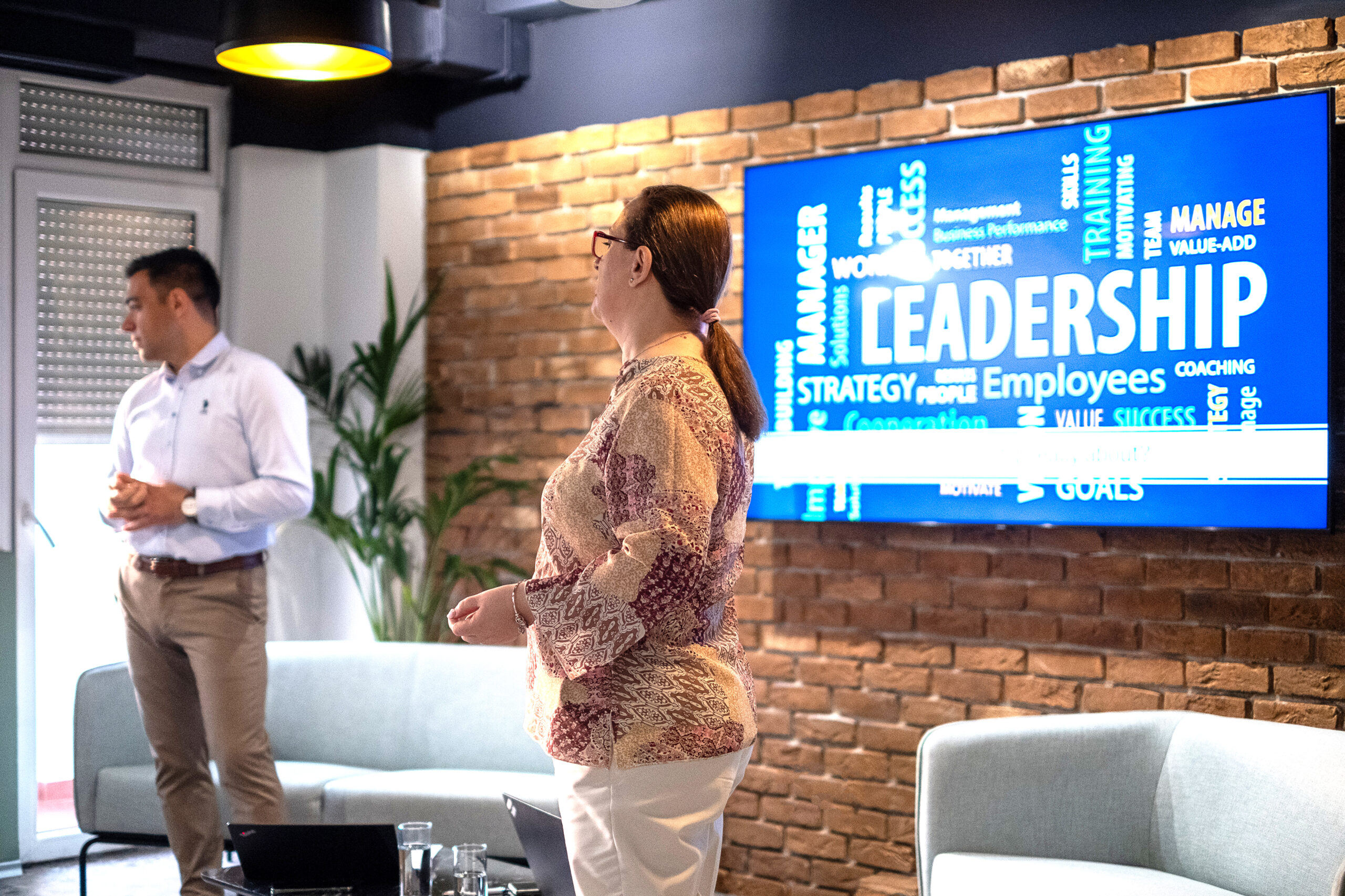Effective leadership is one of the crucial yet often overlooked factors in the successful delivery of software development projects. In an age when methodologies, strategies, and required skill levels are reaching a level of standardization, leadership qualities can provide the shared vision and collaborative spirit that set successful, high-performing teams apart.
Organizations looking to improve leadership in their software development teams can begin by asking the following questions: Does leadership equal management? Where do we draw the lines of responsibility for successful delivery? How does the complex web of roles in software development influence positive outcomes?
At HTEC, these questions are central to establishing practices that power successful delivery across a broad, international portfolio of large-scale engineering and digital product development projects. Recently, the company opened the doors of its Skopje branch office for a meetup of local industry leaders, colleagues, and students to discuss the importance of leadership in software delivery. Here’s what was covered at the event:
Leadership as a team trait
The hosts of the event, HTEC’s Head of Delivery Management, Biljana Drvoshanova and Engineering and Delivery Manager, Vasko Drenoski, are experienced leaders who have learned how to shape and navigate delivery practices. With different backgrounds—Biljana in project management and Vasko in software engineering—they provided a broad perspective and touched on how leadership should function in a team.
“Leadership and delivery are intrinsically intertwined”, Biljana said. “There is no successful delivery with bad leadership, and even the best leaders in the world cannot make it work without solid delivery practices. For us, it is always important to stress that leadership is not one person holding all the power, but a dispersed skill set distributed across all team members.”
Are all leaders in management?
Vasko highlighted the difference between leadership and management — after all, not all leaders are in management roles. Also, while team leadership is important, everyone can also be an individual leader when it comes to their work.
“Leadership is not solely reserved for managerial roles. All of us as team members can be leaders through commitment and ownership of our work.”
He also mentioned how important it is for teams and organizations to nurture leadership qualities and provide guidance to help leaders feel comfortable in their roles. When everyone on the team takes responsibility as a leader for their own work, collaboration across tasks is often stronger and any issues that occur in the software development lifecycle are resolved faster.
Navigating the client-delivery team dynamic
In any client collaboration, communication is key to ensuring that software delivery expectations are met. A natural push-and-pull between client demands and delivery teams occurs on every project and, according to Biljana, navigating that dynamic is the key challenge of project management.
“A project manager or a delivery manager serves as the bridge between the client and the delivery team. In a successful collaboration, the most critical factor—and also the trickiest—is setting the expectations in a way that makes and keeps both sides happy.”
Biljana also discussed how project managers should not function as a boss or a superior but should offer team support that drives the project toward success. She compared the role to an orchestra conductor who must understand every musician’s instrument and the piece’s timing to make sure the composition is played well.
Leadership in engineering
During the discussion, Vasko also discussed how spending a decade in software engineering prior to transitioning into a managerial role informed his approach to management.
“Engineers like to keep things as simple as possible—black or white, true or false. We base our decisions on facts. Now, I work with people instead of data, but the principle is the same —gather all relevant information and use it to decide.”
Vasko underscored the importance of knowing how to work with different people as a leader—engineers, software testers, product owners, and client representatives. Establishing quality communication with each of the team members can help leaders gather information quickly and make informed decisions for faster delivery.
Clear responsibilities as the foundation of success
Biljana and Vasko agreed that the foundation of successful delivery practices is a clear definition of each team member’s role and responsibilities.
Vasko recalled his own challenge of releasing engineering responsibilities as he transitioned into management. When translating client requirements into instructions for the team, he would also include many technical notes until a technical lead on a project changed his perspective.
“He explained that the team needed to have the responsibility to make technical decisions. They were held accountable for technical results in the same way I was held accountable for my business decisions. It helped me realize that what I saw as being helpful was only adding noise and confusion to the delivery process.”
A clear definition of roles and responsibilities for leaders and their teams is also one of the main prerequisites for a smooth, frictionless collaboration with the client. With a solid distribution of skills and responsibilities in place, we can accurately represent team capacity to a client and manage their expectations around timelines and deliverables.
Leadership is changing
The role and the nature of leadership in software development are constantly changing with the industry. Software development practices and project management methodologies keep evolving and being refined, introducing new roles and shifting approaches.
HTEC is continually refining its delivery practices and methodologies to ensure positive outcomes. However, the foundation for the company’s effective leadership and delivery practices remains the same: responsibility, accountability, and a commitment to setting, meeting, and exceeding expectations.
Discussing the relationship between leadership and software delivery within the professional community helps us all reflect, improve, and prepare for the challenges that lie ahead. HTEC is keen to share its knowledge and experiences and welcomes the input of local industry thought leaders as a pathway towards sustainable growth and improvement in our shared tech ecosystem.
Are you looking for a reliable software engineering and digital product development partner? HTEC’s delivery and leadership practices ensure smooth and successful delivery at every stage of the project. To learn more about HTEC’s way of working, explore our operational excellence and strategic leadership practices.
A Macedonian-language version of this article is available on it.mk.






